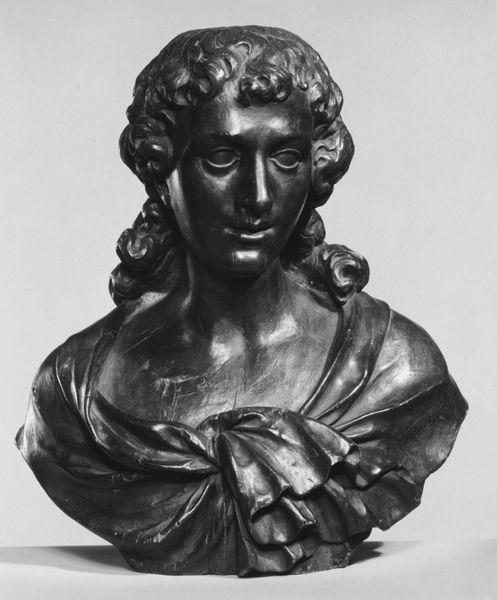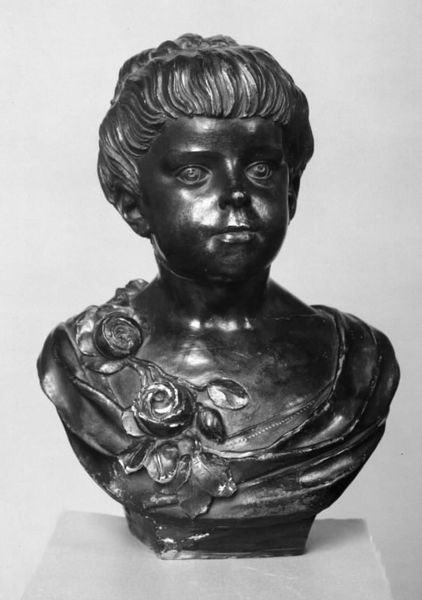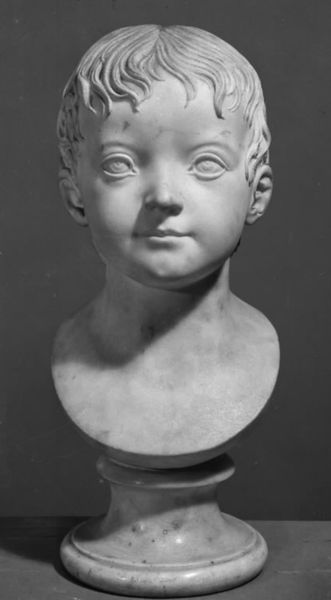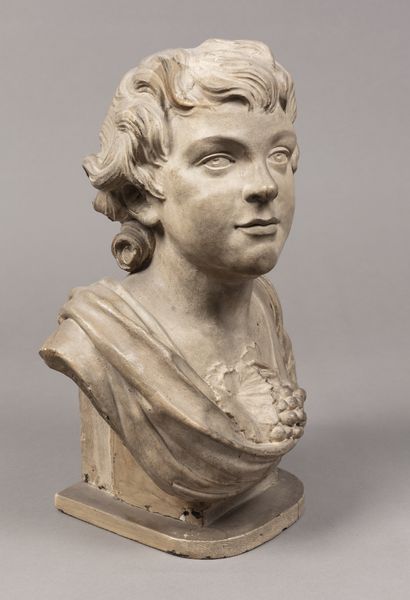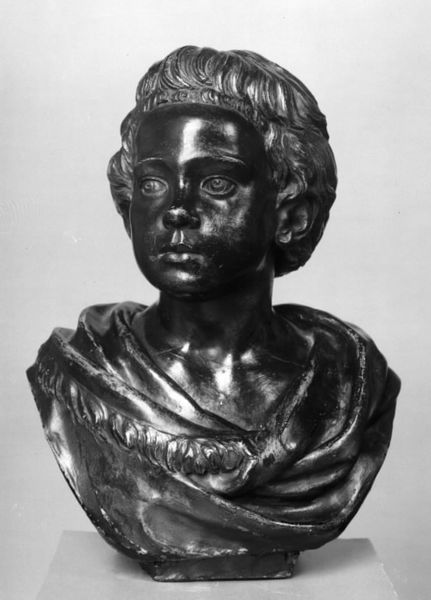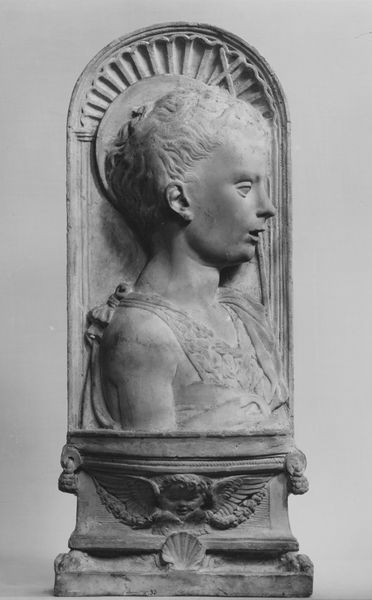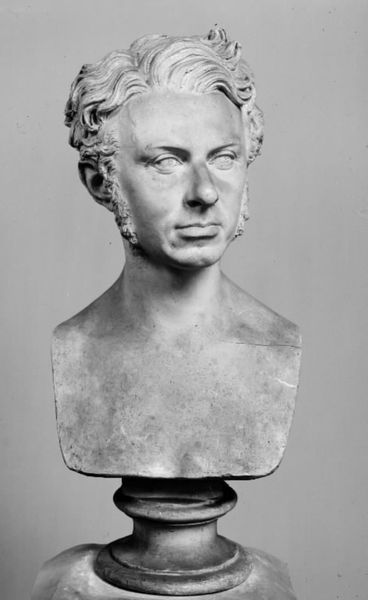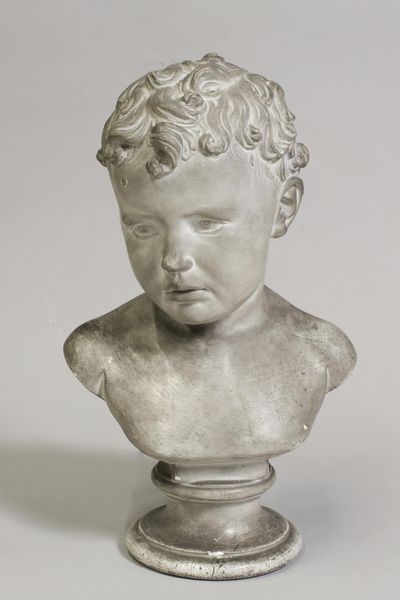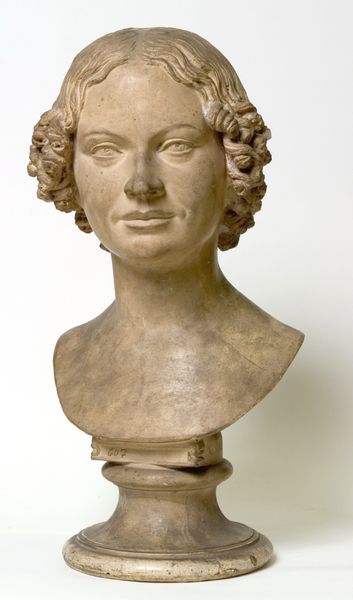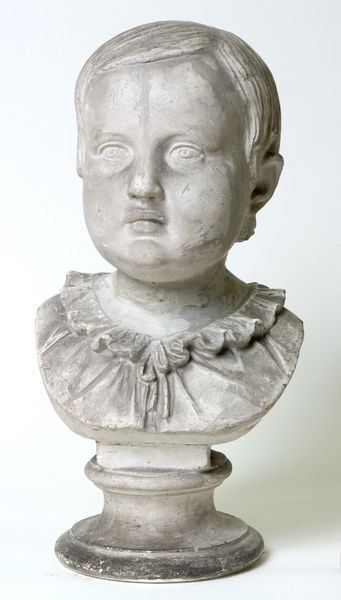
sculpture
#
portrait
#
medieval
#
sculpture
#
figuration
#
sculpture
#
black and white
#
monochrome
#
decorative-art
#
italian-renaissance
#
monochrome
Dimensions: 15 1/4 × 13 1/4 in. (38.7 × 33.7 cm)
Copyright: Public Domain
Curator: Welcome. Here we have Pierino da Vinci's sculpture titled "Child", created sometime in the 15th or 16th century. Editor: Immediately, I notice how this piece radiates a sense of serenity and contemplation, which strikes me as particularly interesting. What sort of statement do you feel it makes? Curator: Looking at it purely from a sculptural perspective, da Vinci’s use of line and form is exquisite. Note the precise definition of the curls, contrasting with the smoother surfaces of the face and the draped garment. It exemplifies the Renaissance fascination with anatomical detail while retaining an element of idealized beauty. Editor: I am intrigued by that element of idealization, given its original audience and social context. In what ways might such art contribute to, or even resist, the hierarchies and social dynamics inherent in representing childhood during the Italian Renaissance? This subject—especially considering the period's high child mortality rates—invites somber questions about sentimentality and social expectations. Curator: Certainly. However, observing this sculpture solely on the formal aspects, it appears less about reflecting socio-political themes but is more aimed towards capturing universal aesthetics through its construction of harmonious, idealized proportions—a key tenet of Renaissance art theory. It emphasizes the visual elements over any social commentary. Editor: True. And yet, ignoring social context risks missing layers of potential interpretation. Think about the child's gaze, subtly averted. Is it modesty, or something else? The monochrome material only deepens the enigma. Perhaps the sculpture's visual harmony conceals anxieties linked to class, family, and representation during this era. Curator: Indeed. However, if we accept it's meant to reflect ideals of youth and beauty as codified by Renaissance aesthetic standards, its value lies primarily in the visual execution of those concepts, where surface, balance, and finish dominate meaning. The rest are potentially interesting extrapolations. Editor: I find those extrapolations vital, and it speaks volumes to examine artwork at the crossroads of then and now—to connect both formal achievement alongside social relevance, prompting deeper consideration on individual, historical and contemporary values of representation. Curator: Perhaps, on closer examination, what it reflects more vividly is not merely individual context but rather our contemporary need to infuse social commentary into classical aesthetics. This approach transforms viewing the piece into more of an act of projection of present ideologies upon older pieces, in addition to, or even replacing traditional approaches of simple observation.
Comments
No comments
Be the first to comment and join the conversation on the ultimate creative platform.

